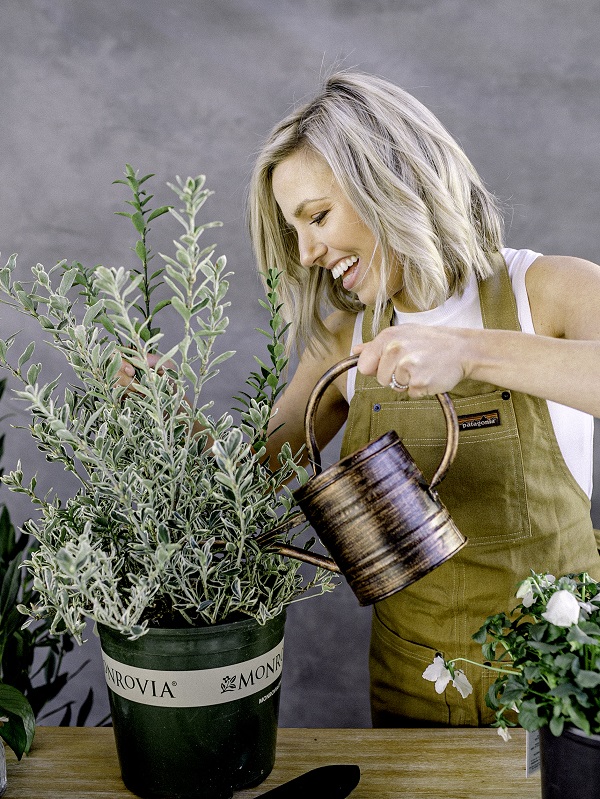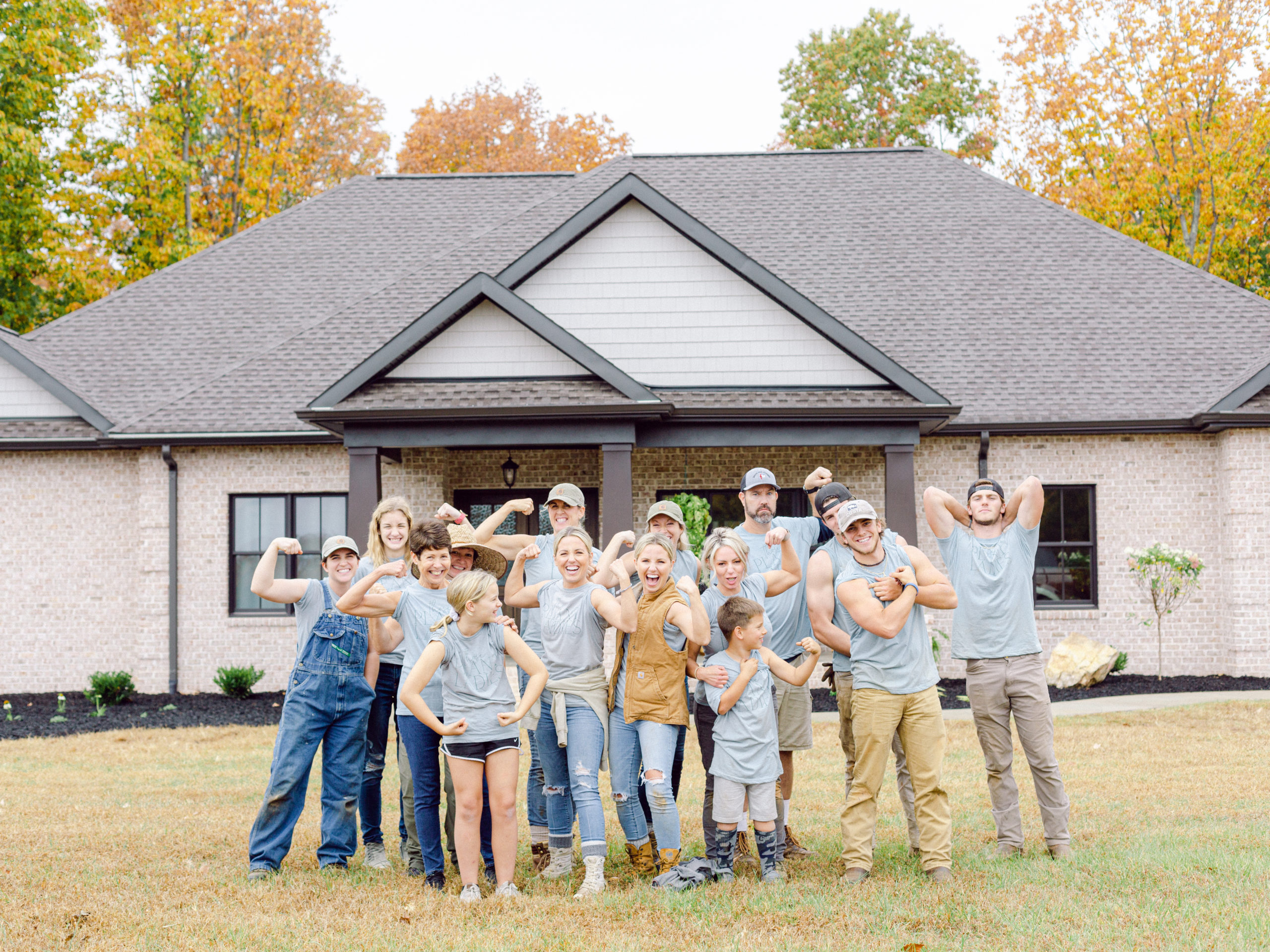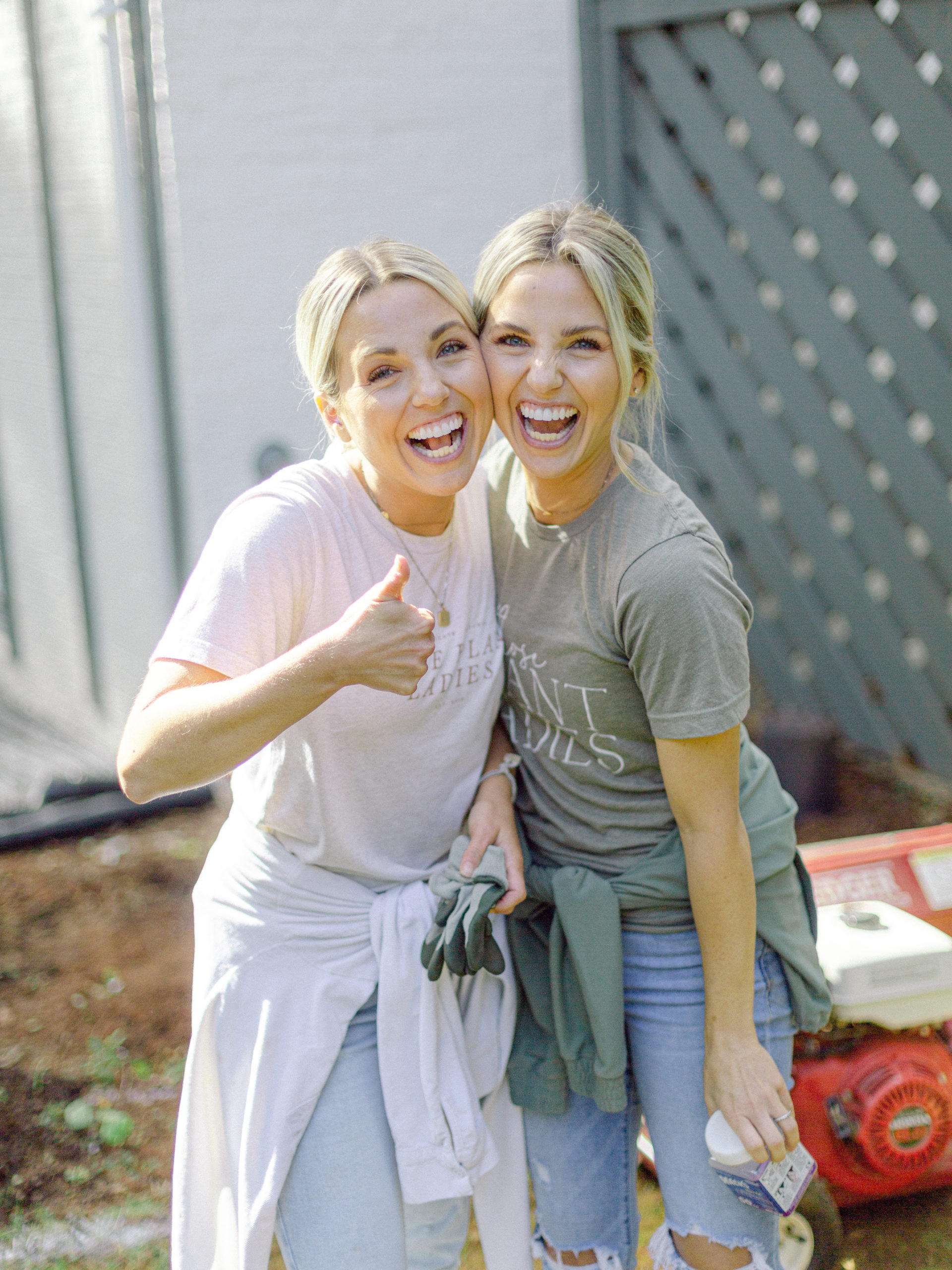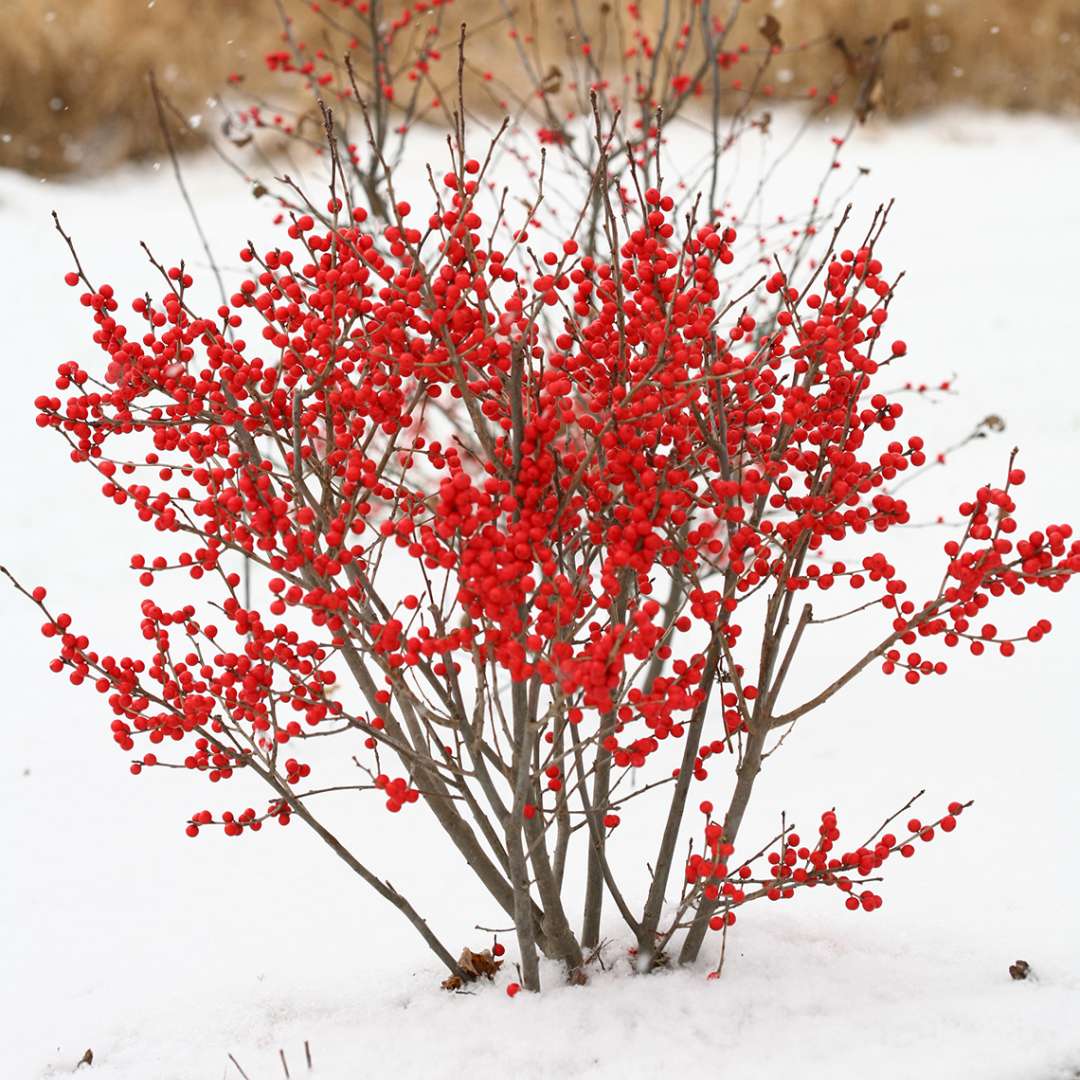
Summer heat has us thinking about watering our plants again – and again and again! Here at Those Plant Ladies, we often prefer to choose plants that can hold their own in our landscape. But some things that we love will always need to be watered on the hottest summer days… things like containers, annual flowers and vegetables, and newly planted plants.
If you just planted some new plants, check out this guide to help you water those new babies just the right amount!
But for now, let’s stick to the best practices for watering your plants, old and new, to keep your plants and thriving!

When you picture someone watering a plant, you probably imagine a hose with a sprayer, a watering can, or a yard sprinkler flinging water all across beautiful luscious plants, giving them all the hydration they need, right? Like this…

A pretty picture, but a very bad way to water! Not only is a lot of water wasted on the pathways and other places without plants, putting water on the leaves can lead to diseases like fungal leaf spots developing on your plants. Plants only take in water through their roots so the water that’s left to lay on their leaves simply evaporates. No one likes to refill and carry around watering cans so be sure to put it to good use by applying it directly to the soil. We like watering cans with long skinny spouts for our containers so that they can reach through the leaves to add water to the soil instead of sprinkling the water over the top of the plant.
We also love to use soaker hoses in our in-ground planting beds to help keep our water applications to the soil. These types of hoses are laid throughout the bed and are made of porous materials or have small holes that allow water to seep out along the length of the hose. You can even add timers to these hoses so that they begin applying water early in the morning without you even having to wake up to turn them on! These are so convenient for new installations and vegetable gardens.

We get it, mornings are hard. Like, really hard. But it’s best to water early in the day. This gives the water a chance to soak into the soil and the plant to get a good drink before the sun and heat get to work on evaporating the water you added. Once the heat sets in, it will begin evaporating the extra water that the soil and plant did not get to absorb, which is a good thing! If you apply water in the evening, the soil and the plant can take the drink they want but the extra water will stay put through the night as temperatures cool and the sun takes a rest. This creates an environment for fungal diseases to take over. Watering in the early morning makes sure your plants get what they need while allowing the heat of the day to take away the leftovers.


We covered this in our guide to watering new plants but it is worth saying again. We want to encourage our plants to grow deep and healthy root systems so that they can support themselves as much as possible without our help. This is especially true for plants in the ground. If we spoon feed our plants a little bit of water every day, that water usually stays in the top 2-3 inches of the soil and the extra is evaporated very quickly when it’s that close to the soil surface. This doesn’t encourage plant roots to grow deeply into the soil where they can access water that remains in the soil much longer thanks to insulation from the heat of the sun. Instead, plant roots will only grow in the top layers of soil where they are consistently finding water. However, if we go away on vacation or miss a day of watering, our plants will be left with just “high and dry” roots!
We want to encourage our plants to grow big, deep, and healthy root systems and that means making them work for water sometimes! When applying water, instead of giving them a little bit at the surface, apply several inches of water at one time. This water will travel deep into the soil and be held there for the plants to reach for when the top few inches dry out on a hot day. For plants in the ground, you should be able to apply water in this method every few days to keep your plants happy. For plants in outdoor containers, we recommend having drainage holes and applying water until it runs out of the bottom of the pot. Your containers may still need water every day, even when watering deeply. This is because the container is often rather small in comparison to the size of your plants so it doesn’t provide room to grow huge root systems. If you begin to see standing water in your container or on the ground that is not soaking into the soil, you can stop applying water. This shouldn’t be a problem if you have drainage holes in your pots and have well-draining soils in your yard.

When you’re watering your plants, keep these three simple tips in mind:
- Water the soil, not the plant
- Water early in the morning
- Water deeply and infrequently
By doing this, you’ll save water, grow healthier plants, and reduce the risks of disease in your landscape! Feel free to leave us a question or comment about watering your plants in the space below. Want even more behind the scenes and input from the hundreds of plant ladies in our community? Check out our Those Plant Ladies COMMUNITY group on Facebook! We would love to have you there and it’s a great place to ask questions and learn from each other.





